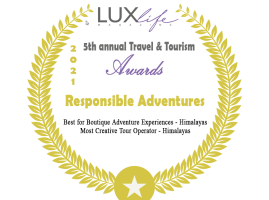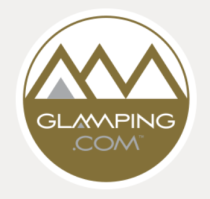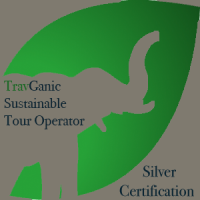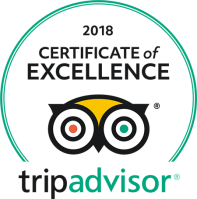Far West Nepal Homestay Trek
September through May
On Request
11 Days / 10 Nights
Min. 4 / Max 12 Trekkers
Moderate
Mountain Lodges
Max 2100 Mt
Hike through Humla
Humla is a remote region of North-West Nepal. This cultural adventure takes you trekking through its river valleys and high peaks. You will experience cultural immersion by staying in homestays in the Buddhist villages along the way.
You get to experience a change of pace at the Bardia National Park after your memorable trekking adventures. You will spend time spotting native wildlife in the sultry plains of Nepal before your trip ends in thriving Kathmandu.
Humla, located in the remote northwest region of Nepal, offers a unique cultural adventure that combines trekking through mesmerizing river valleys and scaling high peaks. Along the way, you’ll have the opportunity to immerse yourself in the local culture by staying in traditional homestays nestled within Buddhist villages.
After your unforgettable trekking experiences, the pace changes as you venture to Bardia National Park. This remarkable destination allows you to spend time in the sultry plains of Nepal, where you can spot a diverse array of native wildlife in their natural habitat.
Finally, your journey concludes in the vibrant city of Kathmandu. As the capital of Nepal, Kathmandu provides a captivating blend of ancient history and modern life, offering an enriching conclusion to your trip.
Highlights of the Trip
- Enjoy a moderate trek to one of Nepal’s remote areas
- Go on a wildlife safari in Bardia National Park, spotting tigers and rhinoceros
- Experience the cultural, spiritual and diverse highlights of remote Nepal
- Stay in homestays and jungle lodges for an authentic cultural immersion in Nepal

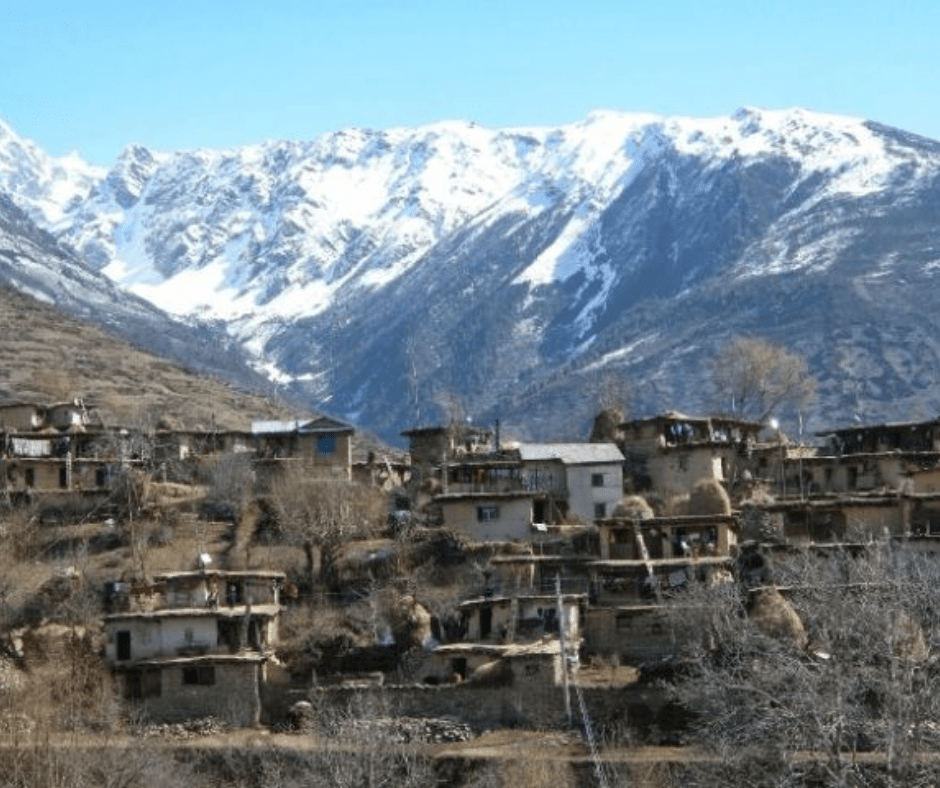
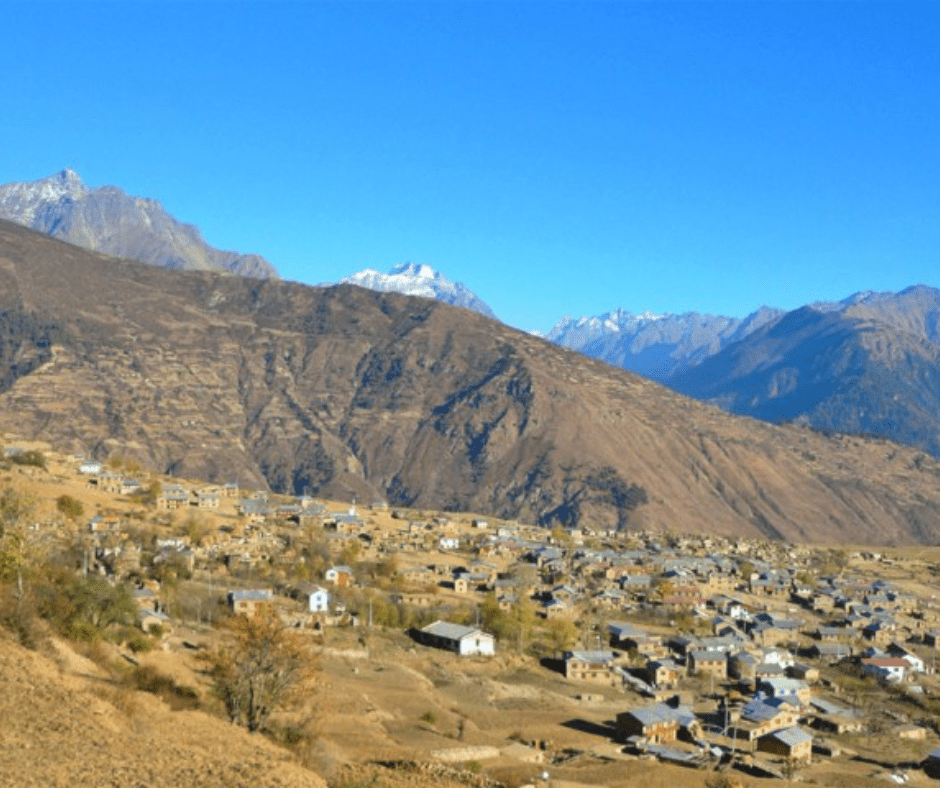
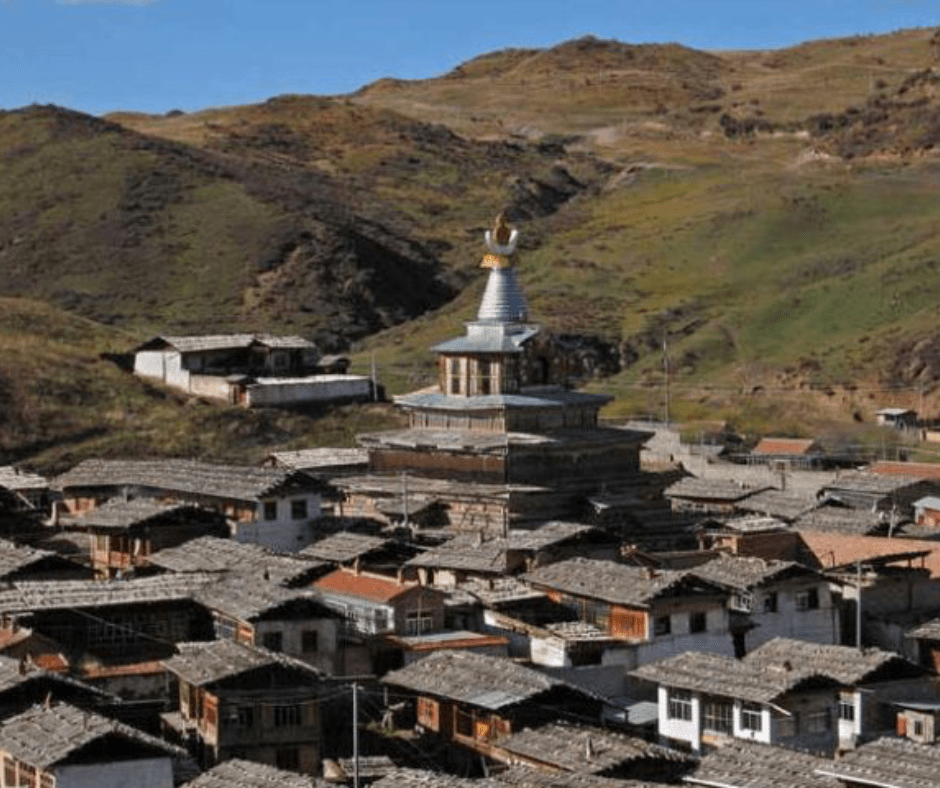

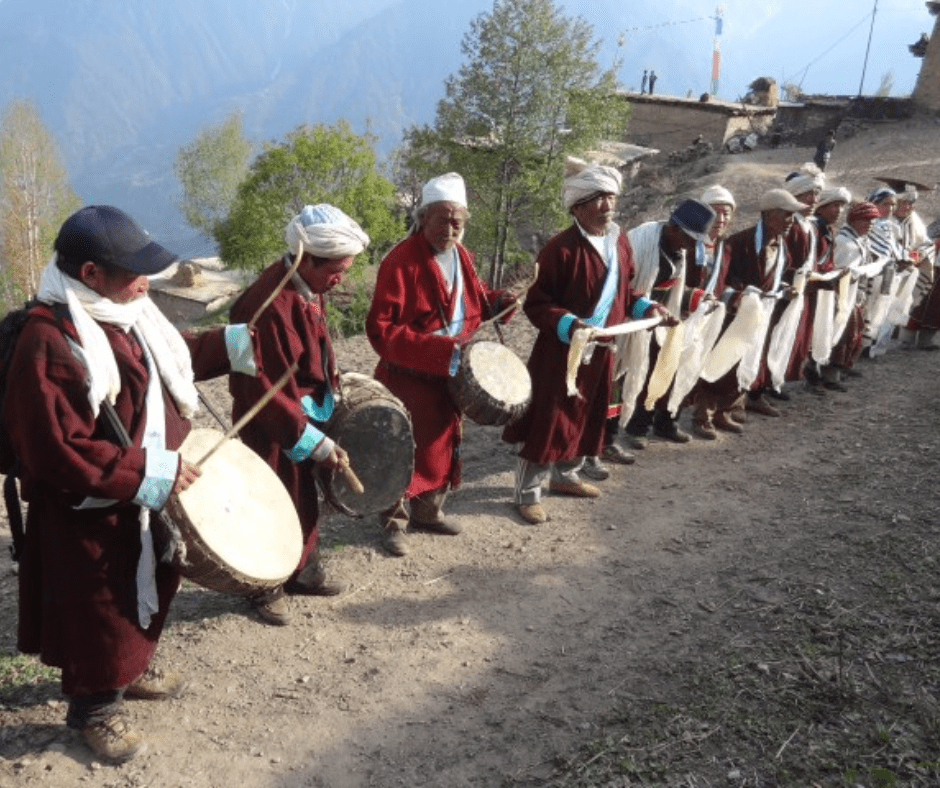
Itinerary
Upon arrival in Kathmandu, your trek leader will greet you at the airport and accompany you to your hotel. Get briefed on the upcoming itinerary, setting the tone for your adventure.
Today, your adventure brings you to the captivating city of Kathmandu. Begin your day by exploring the enchanting sights the city has to offer. In the morning, embark on a mesmerizing sightseeing tour of Patan Durbar Square, a UNESCO World Heritage Site that houses the ancient royal palace. Marvel at the intricately designed architecture and immerse yourself in this site’s rich cultural heritage.
Next, visit the holy Buddhist stupa of Swayambunath, known affectionately as the ‘Monkey Temple.’ As you climb the steps to the stupa, you’ll be greeted by mischievous monkeys and breathtaking panoramic city views. Explore the ornate decorations and soak in the peaceful ambience of this sacred site.
In the afternoon, you’ll board a short domestic flight to Nepalgunj, where you will spend the night. Nepalgunj serves as a gateway to several nature reserves and is a vibrant city in its own right. Take this opportunity to rest and rejuvenate before continuing your enthralling journey through Nepal.
We commence our adventure with an early morning flight to Simikot, the district headquarters of Humla, located in the northern region. Simikot offers a picturesque view on a ridge overlooking the Humla Karnali River. The mountain flight is a breathtaking experience, with the aircraft soaring just above the stunning hilltops. Weather permitting, we will arrive before lunch, ensuring the timely execution of our itinerary.
Upon arrival in Simikot, our trekking team will greet you. Simikot is a unique blend of Hindu and Tibetan cultures, creating a fascinating environment for exploration and discovery. However, it’s essential to note the change in altitude, so it is advised to proceed slowly and steadily, avoiding sudden movements and ensuring proper hydration.
After enjoying an early lunch, we begin our journey towards the Nyinba Valley. A gradual climb of approximately 90 minutes leads us to Limbuk, where prayer flags flutter in the wind, along with a small school. Moving forward, a 15-minute descent takes us to Nyinba village.
Situated at 3,000 meters, Buraunse welcomes us with its Tibetan Buddhist charm. This village is nestled amidst fields of millet and barley, offering tranquil and scenic surroundings. Here, you will find several homestays, providing a remarkable opportunity to directly engage and authentically experience the local way of life in the village.
Staying in these homestays allows you to immerse yourself in the vibrant culture and traditions of the villagers, creating unforgettable memories along the way.
Leaving the enchanting village of Buraunse behind, we descend towards the Ghatte Khola (Mill River) and carefully cross it using a sturdy wooden bridge. From here, the trail ascends gradually, leading us through the scenic village of Langdu. The countryside exudes a captivating beauty, with terraced hills stretching before us and the majestic snow-capped peaks of Changla Himal (6,563 m) and Crystal Mountain standing proudly in the distance.
Throughout this route, we encounter numerous small Buddhist stupas and mani walls, constantly reminding us of the enduring spiritual heritage that has thrived here for centuries. Mani walls are waist-high structures adorned with flat stones intricately carved with Buddhist mantras. The most well-known mantra engraved on these stones is “Om Mani Padme Hum,” a reverberating homage to Avalokitesvara, the Bodhisattva of compassion.
After approximately two hours of trekking, we arrive at the village of Thorpa (3,180 m) through a beautifully painted Kangni. This entrance gate serves to protect the village from any evil spirits. Thorpa provides a perfect spot for a satisfying lunch break. Moving forward, we come across a small site called Bhibuck Cave, which houses a meditation cave and a gigantic prayer wheel. Inside the wheel, the powerful mantra “Om Mani Padme Hum” is inscribed thousands of times, and it is believed that spinning the wheel releases the mantra a thousandfold into the universe according to local beliefs.
Our journey continues towards the village of Hutick (3,242 m), requiring approximately an hour’s gradual climb from here. Finally, we reach Nimatang (3,325 m), our destination for the day. Nimatang offers a serene and picturesque setting where we can rest and rejuvenate, preparing ourselves for adventures.
As we bid farewell to the village behind us, our journey takes us through picturesque pine forests, enveloped in the delightful aroma of juniper trees and bushes. The trail gently descends for about half an hour until we reach the Ghatte Khola, which we cross over a sturdy steel bridge. From here, our path begins a gradual ascent towards Raling Gompa, unveiling a stunning small trail that meanders through the verdant forest. Along the way, we are treated to breathtaking panoramic views of the entire Nyinba Valley. Mt. Ribuche graces the southwest, the Changla Range stretches towards the southeast, and Mt. Pungrikar (Panchauli) adorns the northern horizon.
Our objective is to reach a prayer flag pole perched on a high ridge called Tokra (3,547 m), which takes approximately ninety minutes to reach. During the annual Saga Dawa Festival held in May or June, many Nyinba people camp in this area to celebrate the auspicious occasion that marks the birth, enlightenment, and nirvana of Sakyamuni Buddha. The festival has colourful ceremonies, vibrant rituals, and captivating masked dances, drawing people from all corners of the valley to flaunt their splendid traditional costumes. It is a wondrous time to traverse this region and immerse oneself in the cultural festivities.
From Tokra, it takes another ninety minutes to a couple of hours to reach the campsite just below Raling Gompa (3,930 m). Raling Gompa stands precariously on a barren rock, with the majestic Crystal Mountain providing a magnificent backdrop. The sight is truly awe-inspiring and captures the essence of this sacred place. A mere twenty-minute walk from the campsite brings us to Raling Gompa, where we can observe and appreciate the tranquillity of this spiritual sanctuary.
Raling Gompa belongs to Buddhism’s Nyingmapa sect, the oldest and largest sect in Tibetan Buddhism. The monastery holds deep reverence for Guru Rinpoche, also known as Padmasambhava, the revered sage who introduced Vajrayana Buddhism to Tibet and neighbouring regions in the 8th century. Following the Tibetan Buddhist tradition, we will partake in the ritual of circumambulating the monastery thrice clockwise before entering. Adjacent to the monastery is the renowned Milarepa Cave, where the revered yogi-poet Milarepa engaged in deep meditation.
The serenity and spiritual significance of Raling Gompa and its surroundings make it a remarkable destination on our journey through this remote and captivating region.
After retracing our steps back to the steel bridge over the Ghatte Khola, which takes approximately two hours, we now venture downstream of the river. Within 15 minutes, we encounter a junction where we take the left fork leading us towards Bargaun (2,940 m). The trail, once again, ascends to a higher elevation above the river. Walking through juniper bushes and fields, the terrain remains relatively easy-going. After approximately 30 minutes, we pass the settlement of Nimatang Gomba (3,185 m), which comprises only a few houses within a small monastery.
Continuing along the path, we traverse above the fields for some time, enjoying the scenic vistas. Finally, after about one and a half hours of walking, we reach the charming village of Bargaun. Surrounded by fields and adorned with several homestays, Bargaun offers a welcoming atmosphere. The village is predominantly Buddhist, with a small Hindu population also residing in the area. Here, we have the delightful opportunity to witness a captivating program showcasing the healing abilities of a local Shaman.
Immersing ourselves in the local culture, we can observe the Shaman perform traditional rituals and practices, attributing to their unique healing techniques. This provides us firsthand experience and insight into their spiritual beliefs and practices. It is an exciting and enlightening opportunity to witness and appreciate this remote region’s rich diversity and traditions.
Bargaun, with its picturesque surroundings and cultural offerings, serves as a remarkable destination on our journey, allowing us to immerse ourselves deeper into the local way of life and understand the unique rituals and customs that hold significant importance within the community.
After indulging in a delicious late breakfast of buckwheat pancakes with potato curry, we begin our journey towards Simikot. Setting off along a small trail, we traverse terraced fields, enjoying a relatively flat and easy walk. We opt for the lower route, which takes us on a small circuit as we proceed.
The scenic trail leads us towards Simikot, and after approximately three hours of walking, we finally arrived at our destination. In Simikot, we can look forward to some welcomed “luxuries” that may not have been readily available during our previous treks. One such luxury is the opportunity to enjoy a hot shower, allowing us to refresh and rejuvenate ourselves after the day’s adventure.
Simikot, as a small town, is an essential hub for trekkers and travellers in this region. Here, we can take advantage of the amenities and services, such as comfortable accommodations, local shops, and dining options. It is a convenient base for restocking supplies, interacting with fellow trekkers, and perhaps even sharing stories and experiences from the journey thus far.
This brief respite in Simikot allows us to relax, recharge, and enjoy some modern conveniences that may have been scarce along the trail. It also allows us to prepare for the next phase of our adventure, ensuring we are well-rested and equipped for the challenges and wonders.
After our stay in Simikot, we embark on the next phase of our journey by taking a flight to Nepalgunj, a town in southern Nepal. From Nepalgunj, we continue our adventure with a two-hour drive to Bardia National Park, covering approximately 56 miles (90 km). By midday, we should arrive at the safari lodge, our accommodation for our stay.
Bardia National Park presents a remarkable opportunity to experience the rich cultural diversity and varied landscapes Nepal offers. Upon arrival at the safari lodge, we can enjoy a well-deserved lunch before delving into our explorations.
One of the activities scheduled for the afternoon is a tour of Tharu village. The Tharus are believed to be the original inhabitants of this forested region. They possess a unique cultural heritage and have adapted to the local environment. Interestingly, the Tharus are renowned for their supposed immunity to malaria, which has been associated with their traditional lifestyle and natural remedies.
During our visit to the Tharu village, we will have the opportunity to interact with the locals, learn about their customs and way of life, and gain insights into their unique cultural practices. Exploring their traditional mud houses, community structures, and vibrant surroundings allows us to witness firsthand the preservation of their cultural identity within this natural setting.
In the evening, before dinner, we will be treated to a traditional Tharu cultural show. This captivating performance showcases their vibrant music, mesmerizing dance forms, and colourful costumes. It is a fantastic opportunity to immerse ourselves in the Tharu culture, experience their artistry, and witness the traditions passed down through generations.
Overall, this portion of our journey in Bardia National Park offers an incredible combination of wildlife encounters, natural beauty, and cultural immersion. It gives us a unique perspective on Nepal’s diverse heritage, further enriching our travel experience in this captivating country.
Today promises to be an exciting day as we have a full day to immerse ourselves in the wonders of Bardia National Park. With various activities to choose from, we can tailor our experience based on our preferences and interests.
Starting our day early in the morning is highly recommended as it allows us to witness the serenity of the jungle as mist rises over the river and grasslands. The cooler temperatures make it an ideal time to embark on a jeep safari, where we can explore the diverse flora and fauna of the park. As we venture into the wilderness, we can listen to the delightful chorus of monkeys chattering, birdsong filling the air, and the gentle rustling of bushes as wildlife passes. Keep your eyes keenly peeled, and you might even have the incredible luck of spotting the elusive Royal Bengal Tiger inhabiting this park.
Another captivating activity to partake in is elephant bathing. This immersive experience allows us to join caretakers in caring for and bathing these majestic creatures. It’s a unique opportunity to witness their playful nature up close while participating in their daily routine.
For those interested in avian wonders, birdwatching enthusiasts will be delighted by the park’s rich birdlife. Bardia National Park is home to over 400 species of birds, making it a paradise for birdwatchers. This activity can be pursued at any time during the day.
Considering the heat that may increase in the afternoon, a jungle walk can be a fantastic option. Guided by knowledgeable park rangers, we can explore the dense foliage, appreciate the more minor details of the ecosystem and perhaps even stumble upon remarkable wildlife encounters. Always maintain safety protocols and heed the guidance of the experienced guides during such walks.
Alternatively, if the heat proves too much, we can relax and unwind at the resort, taking advantage of its amenities and enjoying the tranquil ambience amidst nature.
Throughout the day, it is essential to have your camera ready to capture remarkable wildlife moments and preserve precious memories. Remember to maintain a respectful distance from the animals and follow the park’s guidelines for responsible tourism.
Overall, this full day in Bardia National Park offers a wealth of thrilling adventures, mesmerizing sights, and opportunities to connect with nature. Whether encountering wildlife, capturing stunning photographs, or simply finding solace in the park’s serene surroundings, this day promises to be a highlight of our journey.
After returning to Kathmandu from Bardia National Park, you will have free time in the afternoon to explore the capital or do some last-minute shopping. Kathmandu is known for its vibrant markets, with Thamel, Asan Bazaar, and Durbar Square being popular destinations. You can find a wide range of traditional handicrafts, artworks, clothing, and unique items in these areas. Remember to bargain respectfully and ensure the authenticity and quality of the products you purchase. Finally, be mindful of your flight departure time and potential traffic congestion when planning your shopping excursion.
You are free in Kathmandu until your scheduled departure from Kathmandu airport.
Inclusions
- Boutique hotel in Kathmandu with breakfast
- Mentioned sightseeing.
- Domestic flight
- All private vehicles
- Two nights in a deluxe resort in Bardiya National Park
- Expert trek leader or hire Raj
- Trekking chef
- One assistant guide per 4 trekkers
- 1 porter between 2 trekkers
- All meals on the trek – the best and healthiest food in the Himalayas.
Exclusions
- International airport taxes
- Visas
- All optional additional tours or activities during free time
- Transportation outside of the tour program
- Travel insurance (compulsory to have insurance that covers helicopter evacuation)
- Tips (suggested amount US$75 per week for staff only); Leader’s tips at your discretion
- Items of a personal nature, e.g., alcoholic drinks, bottled beverages, laundry, souvenirs, etc.










